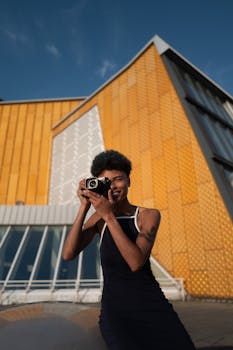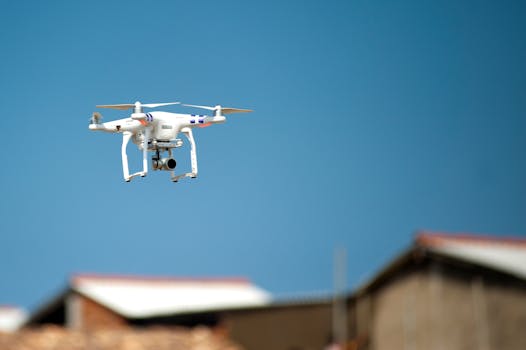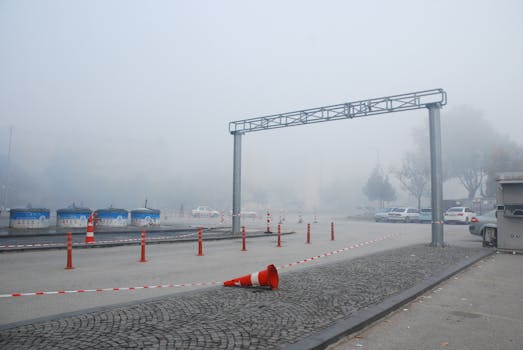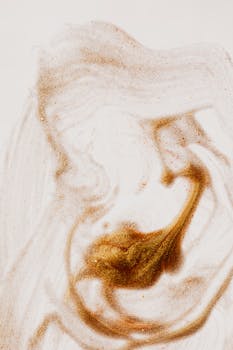Argomenti affrontati
- Introduction: The Dawn of Photography and Its Evolution
- Early Techniques: Daguerreotype and Calotype
- The Rise of Film: The Impact of Kodak and 35mm Film
- Color Photography: From Autochrome to Kodachrome
- The Digital Revolution: Transition from Analog to Digital
- Advanced Techniques: HDR, Panoramas, and Macro Photography
- The Role of Post-Processing: Darkroom to Photoshop
- Secrets of Composition: The Rule of Thirds and Beyond
- Conclusion: The Future of Photography and Emerging Trends
Introduction: The Dawn of Photography and Its Evolution

The Birth of Photography
The journey of photography began in the early 19th century with the creation of the first permanent photograph by Joseph Nicéphore Niépce in 1826. His invention, known as heliography, utilized a bitumen-coated plate that captured an image after an exposure of about eight hours. This groundbreaking moment marked the transition from painted portraits to captured images, forever altering how we document and perceive the world around us.
Early Techniques and Innovations
The evolution of photography continued with the introduction of new chemicals and techniques. In 1839, Louis Daguerre unveiled the daguerreotype, which significantly reduced exposure time and produced clearer images. This innovation spurred a wave of interest and experimentation, leading to various techniques like albumen prints and collodion wet plates that further enhanced image quality and accessibility. By the late 1800s, roll film was introduced by George Eastman, leading to the mass production of cameras and the democratization of photography.
The Artistic Transformation
With the accessibility of photography, it transitioned from merely a scientific endeavor to an art form. Pioneers like Alfred Stieglitz and Ansel Adams began to explore the artistic possibilities of photography, focusing on composition, light, and shadow. This period saw the rise of photography as a legitimate medium within the art world, prompting debates about its role in artistic expression versus mere documentation. Photography festivals and galleries emerged, laying the groundwork for contemporary photographic art today.
Early Techniques: Daguerreotype and Calotype

The Daguerreotype: A Revolutionary Breakthrough
The daguerreotype, introduced by Louis Daguerre in 1839, marked a pivotal moment in the history of photography. This process utilized a silver-plated copper sheet, which was exposed to light for a period that could last from a few seconds to several minutes depending on the lighting conditions. The resulting image, viewed through a glass lens, had incredible detail and was unlike anything seen before. Each daguerreotype is unique, as there is no negative created during the process, making it a treasured collector’s item. The clarity and depth of field captured by daguerreotypes captivated the public and paved the way for photography to be adopted by society at large.
The Calotype: The Birth of Negative-Positive Process
In contrast to the daguerreotype, the calotype process developed by William Henry Fox Talbot in the 1840s introduced a method that allowed for the creation of negatives. Unlike the silvery, reflective quality of daguerreotypes, the calotype produced a softer, more painterly effect through the use of paper coated with silver iodide. After exposure, the latent image was developed in gallic acid, creating a negative from which multiple positive prints could be made. This innovation not only increased the ability to reproduce images but also led to a new understanding of photographic techniques, emphasizing the significance of light and shadow in creating compelling images.
The Impact on Society and Art
Both the daguerreotype and calotype played crucial roles in transforming photography from a scientific experiment to a respected art form. They democratized image-making, allowing more people to capture their likenesses and moments in history. The availability of these photographs enabled the documentation of society, culture, and personal histories, providing an insightful look into the lives of people in the 19th century. Furthermore, the artistic implications of these early techniques encouraged photographers to experiment with composition, light, and subject matter, laying a foundation for future artistic movements and the evolution of photography as an essential medium in the visual arts.
The Rise of Film: The Impact of Kodak and 35mm Film

The Birth of Kodak and the Introduction of Roll Film
The Kodak Company, founded by George Eastman in 1888, revolutionized photography with the introduction of the first commercially successful roll film camera. The marketing slogan “You press the button, we do the rest” encapsulated the ease with which consumers could now engage with photography. Kodak’s camera came pre-loaded with a 100-exposure roll of flexible film, allowing for a simpler and more accessible way to capture images compared to the complex processes of earlier techniques. This innovation not only made it convenient for amateurs to take photographs but also marked the beginning of mass-market photography, paving the way for the photograph to become an integral part of everyday life.
The Rise of 35mm Film and Its Influence
By the 1920s, the introduction of 35mm film further transformed photography. Originally developed for motion pictures, 35mm film’s compact size and versatile nature made it ideal for still photography as well. The introduction of 35mm cameras, such as the Leica I in 1925, enabled photographers to capture high-quality images with greater mobility. This format became the standard for both amateur and professional photographers, facilitating a new wave of creativity and innovation in the art of photography. The ability to capture spontaneous moments with a portable camera allowed photography to flourish as both a medium for documentation and artistic expression.
The Cultural Impact of Film Photography
The rise of Kodak and 35mm film drastically changed how society interacted with photography. It enabled the rise of photojournalism, the capturing of everyday life, and the emergence of photography as a popular art form. With the ability to shoot multiple frames without the limitations of glass plates or cumbersome equipment, photographers began to explore new styles and techniques. This era saw the birth of iconic movements such as street photography, where candid images of everyday life became valued for their ability to document the human experience. Furthermore, the accessibility of photography encouraged people from all walks of life to engage in creative expression, resulting in a cultural shift that celebrated the ability to immortalize moments and emotions through the lens.
Color Photography: From Autochrome to Kodachrome

The Advent of Autochrome
The journey of color photography began with the introduction of Autochrome plates in 1907, created by the Lumière brothers. Autochrome was the first widely adopted color process, which utilized dyed grains of starch as color filters over a black-and-white emulsion. Photographers appreciated this method for its ability to produce vibrant images with a degree of softness and luminance that evoked painterly qualities. Despite its popularity, the Autochrome process had limitations, including longer exposure times and the expense of materials, restricting its use primarily to professional photographers and serious amateurs.
The Rise of Kodachrome
Kodachrome was introduced by Eastman Kodak in 1935 and marked a significant advancement in color photography. This film developed a reputation for its rich color saturation and remarkable sharpness, features that were particularly appealing for both amateur and professional photographers. Unlike Autochrome, Kodachrome used a complex three-color dye process, allowing for more vibrant and accurate color reproduction. Photographers could now produce a wide array of prints, giving rise to an explosion of creativity in various fields, including journalism, advertising, and fine art photography, and altering the landscape of visual culture.
The Impact on Photography and Society
The transition from Autochrome to Kodachrome not only influenced photographic techniques but also significantly impacted societal perceptions of photography. As color images became more prevalent, the capacity of photography to convey emotion and realism reached new heights. This shift allowed photographers to tell stories in ways that black-and-white images could not, effectively bridging the gap between documentation and artistic expression. The blossoming color photography industry also democratized image-taking, making it accessible to a wider audience, from amateur enthusiasts capturing family memories to art photographers pushing the boundaries of creative expression. This era of color photography ultimately laid the groundwork for the modern photographic world we know today.
The Digital Revolution: Transition from Analog to Digital

The Shift from Film to Digital
The transition from analog to digital photography began in the late 20th century, fundamentally changing how images were captured, processed, and distributed. Traditional film photography required the use of chemical processes and darkroom techniques to develop images. The introduction of digital sensors, which converted light into electronic signals, allowed photographers to capture images instantly and view them immediately on digital screens. This not only enhanced the user experience but also led to the widespread adoption of digital cameras among amateur and professional photographers alike. The convenience and efficiency of digital photography empowered countless individuals to explore the art form, leading to unprecedented levels of creativity and innovation.
The Impact of Digital Editing Softwares
Digital photography brought along a new era for photo editing through software programs like Adobe Photoshop and Lightroom. These tools enabled photographers to manipulate images with precision, allowing for enhancements and alterations that were impossible with traditional film. The ability to correct color, adjust exposure, and apply various filters transformed photography into a more flexible art form. This advancement not only enhanced our ability to create visually stunning images but also sparked discussions about the authenticity of photographs in the digital age. The accessibility of these tools encouraged more people to experiment with photography and introduced new genres, such as digital art and manipulated photography.
The Rise of Social Media and its Influence
The digital revolution coincided with the rise of social media platforms, fundamentally altering how photography was consumed and shared. Websites like Instagram and Flickr created spaces for photographers to showcase their work, build audiences, and connect with fellow enthusiasts from around the world. This democratization of photography facilitated a cultural shift where everyone could share their experiences and perspectives visually, turning everyday moments into potential masterpieces. The instant feedback and engagement from viewers encouraged photographers to refine their skills and seek continuous improvement, culminating in a vibrant online community that celebrates visual storytelling. The influence of social media not only changed individual practices but also impacted trends in photography, shaping contemporary aesthetics and principles.
Advanced Techniques: HDR, Panoramas, and Macro Photography

Understanding HDR Photography
High Dynamic Range (HDR) photography is an advanced technique that enhances the luminance and detail found in images. By combining multiple exposures of the same scene, photographers can capture a broader range of light and shadows than what a single photograph could achieve. This technique is especially useful in high-contrast environments where the difference between the brightest highlights and the darkest shadows might exceed the camera’s sensor capabilities. Special software is then used to merge these images, resulting in a final photograph that reflects the full scale of light present in the scene. HDR is particularly popular in landscape and architectural photography, where the goal is to represent the scene as the human eye perceives it.
Panorama Photography: Capturing the Expansive View
Panorama photography involves stitching together multiple images to create a single wide-angle view, effectively allowing photographers to encapsulate vast landscapes or large group scenes in one frame. This technique requires careful planning to ensure that each photograph has enough overlap with its neighbors to facilitate seamless blending. Modern smartphones and cameras often come with built-in panorama modes that automatically align and merge the images, simplifying the process for users. The resulting panorama can capture stunning vistas or busy cityscapes, providing a sense of place that is both immersive and expansive, ideal for travel and nature photography.
The Art of Macro Photography
Macro photography focuses on capturing small subjects in exceptionally fine detail, often revealing intricate textures and features that are invisible to the naked eye. To achieve true macro photography, a photographer typically uses specialized lenses or extension tubes that allow for extreme close-ups. Common subjects include insects, flowers, and everyday objects, transforming the mundane into awe-inspiring visuals. The challenge of macro photography lies not only in the technical skills required to maintain focus and clarity at such close distances but also in understanding light and composition to enhance the beauty of the subject. Good macro photos can evoke emotions and invite viewers to appreciate the details in the world around them.
The Role of Post-Processing: Darkroom to Photoshop

The Traditional Darkroom Experience
The darkroom has long been considered a sanctum for photographers, where the tactile and chemical processes allowed them to transform raw negatives into stunning prints. This meticulous craft involved various stages, including developing, stop-bath, and fixing. Photographers worked in dim light to prevent unwanted exposure, carefully manipulating chemicals and timings to achieve their desired results. Techniques like dodging and burning, which involved selectively lightening or darkening areas of the print, enabled artists to enhance specific details and create dramatic effects. The darkroom not only provided control over the final image but also allowed for a personal, hands-on connection to the photograph, fostering an intimate relationship between the artist and their work.
Transitioning to Digital Post-Processing
With the digital revolution, the transition to software-based post-processing introduced new capabilities and expressions in photography. Programs like Adobe Photoshop and Lightroom revolutionized the editing landscape by allowing photographers to manipulate images virtually, streamlining workflows that once required extensive labor in a physical darkroom. Digital editing offers precise tools for retouching, color grading, and applying various styles and filters, making it easier for photographers to bring their creative visions to life. This shift has expanded the possibilities of photographic expression, enabling both amateur and professional photographers to explore their artistry without the constraints of traditional methods.
The Impact of Post-Processing on Artistic Expression
Post-processing has become an essential aspect of modern photography, impacting not just technical aspects but also the way images are perceived and interpreted. While some purists argue that excessive editing can compromise authenticity, many contemporary photographers harness the power of editing software to elevate their work, crafting images that resonate emotionally and tell compelling stories. The ability to adjust colors, tones, and contrasts can profoundly affect the mood and narrative of a photograph, allowing artists to push boundaries and experiment with creative visions. Whether through subtle enhancements or radical transformations, the role of post-processing continues to evolve, shaping the future of photography and challenging traditional concepts of realism and artistry.
Secrets of Composition: The Rule of Thirds and Beyond

The Rule of Thirds: A Classic Guideline
The Rule of Thirds is a fundamental principle in photography composition that encourages balancing elements within a frame. By imagining the image as divided into nine equal segments through two horizontal and two vertical lines, photographers can position the most important subjects along these lines or at their intersections. This technique creates a sense of harmony and balance, steering the viewer’s eye to essential components of the image. For instance, when photographing landscapes, placing the horizon along one of the horizontal lines can lead to a more engaging composition, inviting viewers to explore both the sky and the foreground.
Beyond the Rule: Exploring Alternative Compositions
While the Rule of Thirds serves as an excellent starting point for budding photographers, exploring alternative composition techniques can yield extraordinary results. Techniques such as leading lines, symmetry, and framing can guide the viewer’s gaze and create a sense of depth within the photograph. Leading lines, such as roads or rivers, draw the viewer into the image, while symmetry conveys a feeling of balance and order. Framing, achieved by using elements within the scene to encase the subject, adds layers to the photograph and highlights the main focus. By understanding these various techniques, photographers can convey different moods and emotions, thus increasing the impact of their images.
The Power of Experimentation in Composition
One of the essential aspects of photography is the evolution of personal style, which can be significantly enriched through experimentation with composition. While guidelines like the Rule of Thirds are helpful, breaking these rules can lead to unique and powerful images. Photographers are encouraged to play with perspectives, angles, and arrangements to discover new ways to portray their subjects. For example, placing a subject off-center can evoke feelings of isolation or tension, while extreme close-ups can create intimacy. By embracing a mentality of exploration and creativity, photographers can cultivate their artistic expression and develop a distinctive voice in the vast world of visual storytelling.
Conclusion: The Future of Photography and Emerging Trends

The Rise of AI and Computational Photography
As technology continues to advance, artificial intelligence (AI) is increasingly playing a critical role in photography. Computational photography combines traditional photographic principles with advanced algorithms to enhance image quality and create new artistic expressions. Features such as automatic scene recognition, enhanced low-light performance, and advanced autofocus systems are becoming standard in modern cameras and smartphones. AI also allows for innovative editing capabilities, enabling automatic adjustments that once required extensive manual labor. As these technologies evolve, we can expect a future where photographers will rely on AI to push creative boundaries, allowing them to focus more on storytelling and less on technical details.
Increased Popularity of Mobile Photography
With the ubiquitous presence of smartphones equipped with powerful cameras, mobile photography is gaining ground as a dominant form of image capture. The convenience and portability of mobile devices have empowered a new generation of photographers, making photography accessible to everyone. Social media platforms like Instagram and TikTok have further fueled the demand for visually appealing content, driving users to experiment with their mobile photography skills. As camera technology in smartphones continues to improve, we can anticipate more sophisticated editing tools and features that enable users to create highly polished images without traditional setups, reshaping the way we engage with photography.
The Evolution of Photographic Communities and Sharing Platforms
The digital age has facilitated the emergence of vibrant photographic communities both online and offline. Platforms like Flickr, 500px, and Instagram allow photographers to share their work, receive feedback, and connect with others who share similar passions. These communities have fostered collaboration and knowledge exchange, resulting in the rise of trends and challenges that inspire creativity. Looking ahead, it’s likely we will see further integration of virtual and augmented reality into these platforms, allowing for immersive experiences and new forms of visual storytelling. As photographers continue to form connections across the globe, photography will evolve as a communal art form that celebrates diversity and individual perspectives.




